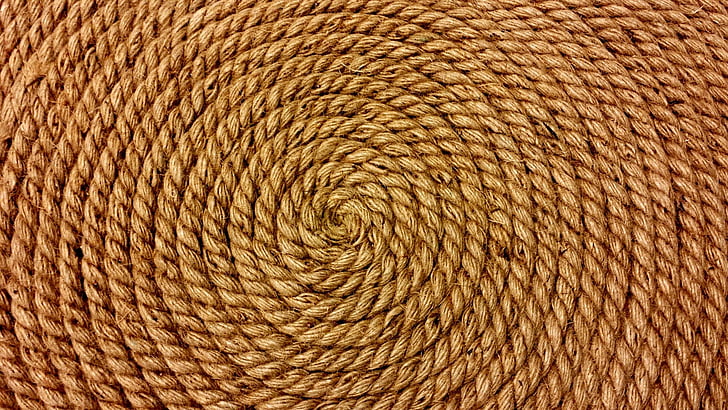The textile industry is facing the challenge of reinventing itself through new methods of conducting its practices. As the modern era flourishes with the approach of sustainable living and environmental consciousness, the fabric industry is witnessing the resurgence of hemp. One of the most remarkable revolutions of the present time is turning the tide in this sector. Hemp is emerging with its versatile applications, captivating deep-rooted history, and incredible eco-friendly attributes. Thus, hemp is paving the way as a game-changer towards a blooming, sustainable future.
Hemp: A Rich History and Remarkable Attributes
Scientifically known as Cannabis Sativa, hemp has a golden and rich history deeply rooted in ancient civilizations. Its wide range of attributes and uses nurture industries from food and medicine to textiles and construction materials. The crucial attribute of this plant that makes it everyone’s choice is its minimal environmental and carbon footprints. Hemp’s remarkable attributes comprise the minimal use of water, pesticides, fertilizers, and time for cultivation, making it a significant sustainable crop. Moreover, this plant is a natural air purifier that grows quickly and densely and absorbs environmental CO2. It grows quickly with the ability to outcompete the weeds and improve the soil structure with its deep-rooted nature, preventing soil erosion.
Hemp: The Fabric of Sustainability
Low Environmental Impact
Hemp is a clear winner for its environmental impact. It manifests a far lower impact on the environment in comparison to conventional textile crops such as cotton. Hemp can grow without the need for a high amount of water (50% less) and can thrive without pesticides or chemicals. Additionally, its short growth cycle allows multiple harvests in a year, again contributing to sustainability.
Versatility and Durability
The fabric of hemp is super durable and ideal for various uses and applications. It is three times stronger than cotton fabric, providing longevity in garments and other hemp-based products. Its durability curbs the frequency of replacing its products and fabric. The reduced need to replace hemp products frequently conserves resources and the environment, minimizing product demand.
Biodegradability
Hemp fabric is completely biodegradable, which means it can dissipate naturally without releasing harmful substances into the environment. This attribute of hemp fabric is utterly opposite to that of synthetic fabrics. Because synthetic cloth materials such as polyester take thousands of years to decompose. Moreover, they harm the environment by mixing into landfills and other water bodies.
Carbon Sequestration
It is another remarkable attribute of hemp that it has the super ability to capture atmospheric carbon dioxide. In its short period of growing cycle, it absorbs a significant amount of CO2. Thus, the hemp plant contributes to mitigating climate change to a greater extent.
Hemp vs. Other Fabrics: A Sustainable Comparison
The eco-friendly revolution of hemp fabric will become more clear by comparing it with other popular textiles to highlight its sustainability.
Hemp vs. Cotton
Due to its huge water needs, cotton is often called “the thirsty crop”. On the other hand, hemp uses 50% less water than other crops, making it suitable for drought-prone areas. Additionally, the inbuilt quality of resisting pests also alleviates the need to use synthetic pesticides. Thus, its decreased ecological effect makes this fabric a wiser choice for people and the textile industry as well.
Hemp vs. Synthetic Fabrics
The main drawback of synthetic fabrics is that they are non-biodegradable and are derived from fossil fuels. Hemp fabric offers an eco-friendly alternative for clothing that does not harm the environment. Additionally, the quality of carbon sequestration makes hemp fabric a champion in the race of fabrics. It can fight against climate change, whereas synthetic fabric contributes significantly to carbon emissions during its production.
Innovations in Hemp Fabric
With the increasing focus on sustainable approaches and advancements in technology, hemp fabric thrives with innovations:
High Fashion and Haute Couture
Hemp fabric is no longer an option for rustic or casual clothing. Designers and fashion enthusiasts globally are turning simple hemp clothing into exclusive haute couture. Additionally, the fabric’s natural texture adds a unique fashion element to hemp’s clothes. The best part is that its sustainability aligns with the current needs of the environment and fashion as well.
Home Textiles and Furnishings
Apart from revolutionizing the clothing industry, it is also contributing to decorating your homes. Hemp makes beautiful and durable home textiles and furnishings, ranging from bed linens to upholstery. The hemp products can withstand long-term use while maintaining ecological balance. Additionally, hemp-based furnishing materials contribute to healthier indoor air quality as they do not release any toxic gases like other materials.
Technical and Industrial Applications
The benefits of hemp extend to the scientific and commercial worlds. It can be converted into bio-composites for construction materials, automobile parts, and even to make plastics instead of synthetic materials.
Challenges and the Path Forward
The increasing use of hemp cloth confronts certain obstacles despite its many advantages. Obstacles to be overcome include a lack of understanding, outdated laws because of their connection to marijuana, and the production’s comparatively greater cost. The future of hemp fabric is bright, though, as consumer demand for eco-friendly items rises and governments acknowledge the value of sustainable alternatives.
Conclusion
Hemp textiles are a monument to both the strength of nature and human ingenuity. It is driving an eco-friendly revolution in the textile industry with its extensive history, amazing sustainability qualities, and uses in a variety of sectors. Adopting hemp fabric is a step towards lowering our carbon footprint, preserving resources, and promoting a sustainable and ethical fashion and textile sector as we all work towards a more sustainable future. The moment has come for us to adopt this environmentally conscious movement.


Pingback: Winter with Hemp: Discover Sustainable Warmth and Style
Pingback: Cannabis and Clothing: The Intersection of Sustainability and Style